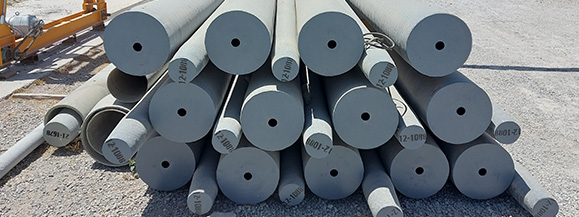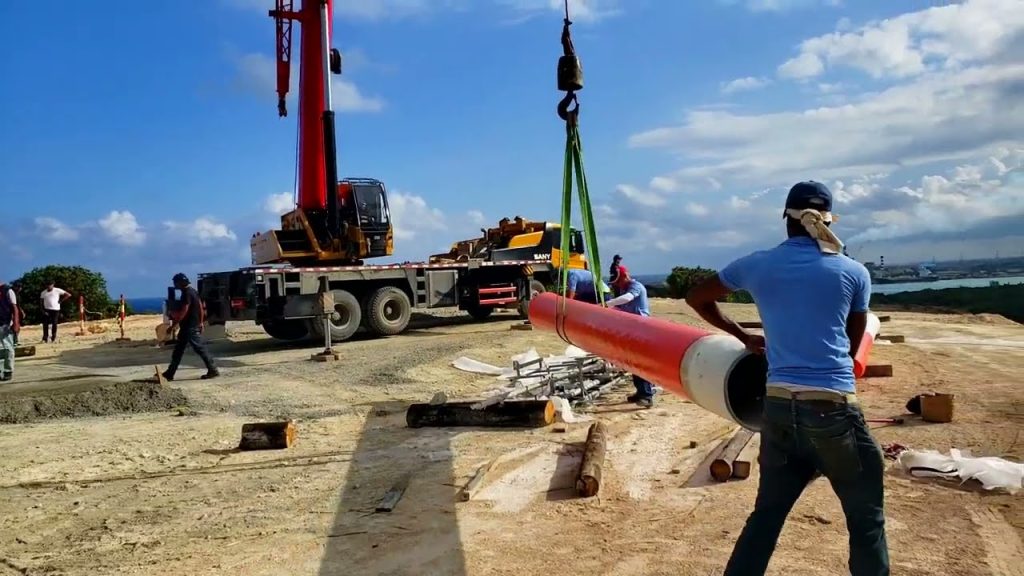Utility poles may not always catch our attention, yet they are essential for keeping modern life connected. From carrying power lines that light our homes to supporting the networks behind mobile communication, these structures are everywhere.
Traditionally, wood, steel, and concrete have dominated the scene. However, fiberglass utility poles are emerging as a game-changer. They combine strength, lightness, and resilience in ways that older materials often struggle to achieve. Let’s explore why fiberglass is becoming the preferred choice for future infrastructure projects.

What Are Fiberglass Utility Poles?
Fiberglass utility poles are engineered structures made from composite materials—mainly glass fibers reinforced with resin. This combination creates a strong yet flexible product, resistant to many of the challenges that compromise traditional poles.
Unlike wood, fiberglass does not rot or suffer termite attacks. Unlike steel, it won’t rust or corrode. And unlike concrete, it doesn’t require heavy machinery for installation. In short, fiberglass provides a balance of strength and convenience, making it highly adaptable across industries.
Key Advantages of Fiberglass Utility Poles
Durability and Resistance
Weather can be ruthless. Heavy storms, floods, or intense sunlight gradually weaken conventional poles. Fiberglass, on the other hand, resists corrosion, moisture, and ultraviolet radiation. Its non-porous nature ensures that it does not absorb water, preventing cracks or structural degradation over time.
Think of it like a modern raincoat—designed not just to keep you dry today, but to withstand years of storms without losing quality.
Lightweight and Easy Installation
One of the strongest selling points of fiberglass utility poles is their light weight. Compared to concrete or steel, they are far easier to transport and install. Crews can handle them with smaller equipment, saving time and reducing labor costs.
This agility becomes crucial in remote or rugged areas where heavy machinery is difficult to bring in. Faster installation means less downtime, especially in emergencies like restoring power after a storm.
Safety Benefits
Fiberglass utility poles is non-conductive, which greatly reduces the risk of electrical hazards for workers and the public. In high-voltage applications, this property is invaluable. By minimizing the chance of accidental electric shocks, fiberglass poles add a critical layer of safety to utility projects.
Sustainability and Environmental Impact
Environmental concerns are reshaping infrastructure decisions worldwide. Fiberglass poles contribute to sustainability by offering a longer service life and requiring fewer replacements. Unlike wooden poles, they don’t involve deforestation. Additionally, their lightweight nature lowers transportation emissions.
In other words, choosing fiberglass poles isn’t just a business decision—it’s also a step toward greener infrastructure.
Applications of Fiberglass Utility Poles
Electrical Distribution and Transmission
Fiberglass poles are widely used to support electrical grids, particularly in areas prone to harsh weather. Their resistance to corrosion ensures uninterrupted service where wooden poles might fail.
Telecommunications Networks
With the expansion of fiber-optic and 5G networks, lightweight and durable poles are critical. Fiberglass poles simplify installations and provide long-term reliability, making them ideal for telecom companies.
Street and Highway Lighting
Municipalities are increasingly turning to fiberglass poles for street and highway lighting projects. Their resistance to rust and minimal maintenance needs make them a cost-effective choice in the long run.
Industrial and Rural Areas
From farms to oilfields, fiberglass poles prove reliable in environments where exposure to chemicals, salt, or moisture would quickly compromise steel or wood.

Comparing Fiberglass Poles to Traditional Materials
Fiberglass vs. Wood
- Wood poles are cheap initially but prone to rot, pests, and fire.
- Fiberglass offers longer durability with zero vulnerability to insects or decay.
Fiberglass vs. Steel
- Steel is strong but corrodes over time, especially in coastal or industrial environments.
- Fiberglass resists corrosion and requires minimal upkeep.
Fiberglass vs. Concrete
- Concrete poles are durable but heavy, making them costly to transport and install.
- Fiberglass, being lightweight, cuts down on installation costs and project time.
Why the Industry Is Moving Toward Fiberglass Poles
Across the globe, utility providers and infrastructure planners are embracing fiberglass. Telecommunications projects increasingly depend on them for quick and efficient deployment. Energy providers see them as a way to build resilient grids in regions vulnerable to natural disasters.
This trend is not just about innovation—it’s about practicality. By delivering durability, safety, and sustainability, fiberglass poles align with the global push toward smarter, more reliable infrastructure.
Conclusion
Fiberglass utility poles are more than just an alternative; they represent a transformation in how we build and maintain critical infrastructure. Their combination of durability, safety, ease of installation, and environmental benefits makes them the logical next step in modern utility planning.
As cities expand, networks grow, and environmental challenges intensify, fiberglass poles are positioned to lead the way toward a stronger, greener, and more reliable future.

 Eléctrica
Eléctrica
 Telecomunicaciones
Telecomunicaciones
 Alumbrado público
Alumbrado público
 Hidráulica
Hidráulica

